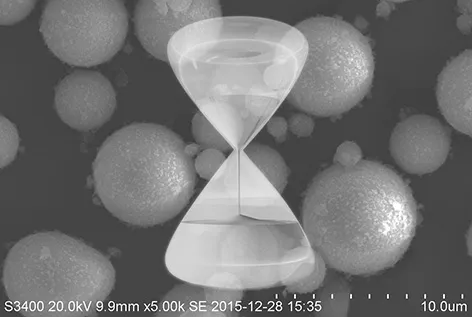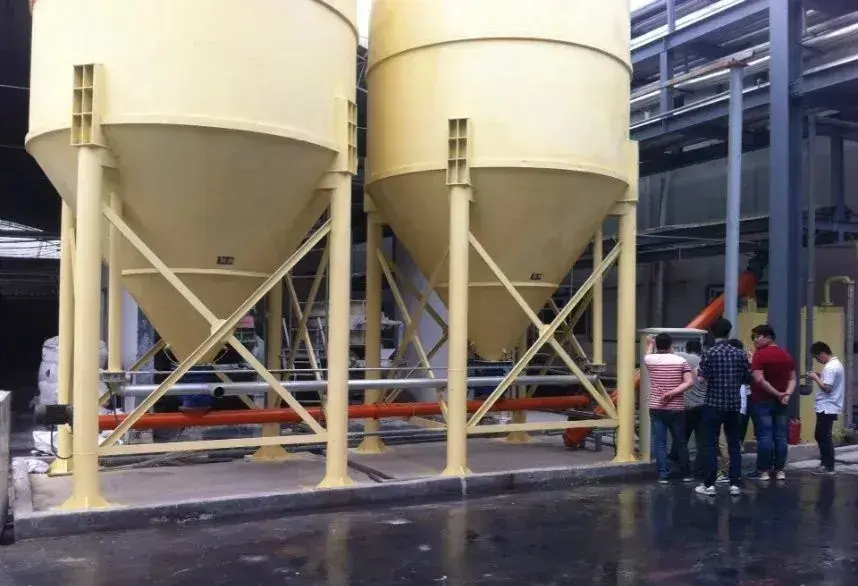Foundation, lipstick, night cream, facial mask, eyeshadow, sunscreen…
Every beautifully crafted makeup look is inseparable from inorganic powders hidden within these products.
Powdered raw materials are the key base ingredients in face powders, blushes, foundations, loose powders, and even toothpaste. Their content in cosmetics can range from 30% to 80%.
In cosmetics, inorganic powders generally serve functions such as coverage, smoothness, oil absorption, spreadability, and sun protection.
Some colored powders also act as pigments, providing cosmetics with vivid colors.

18 Common Inorganic Powders Used in Cosmetics
Currently, the main inorganic powders used in the cosmetics industry include talc, kaolin, mica, silica, montmorillonite, calcium carbonate, magnesium carbonate, diatomite, tourmaline, boron nitride, alumina, hydroxyapatite, zinc oxide, titanium dioxide, iron oxide, ultramarine, manganese violet, and carbon black.
Talc
Talc is a silicate mineral mainly composed of hydrated magnesium silicate. Its powder is a fine white crystalline material with a layered structure and a smooth, lubricating texture. Because of its whiteness, softness, good spreadability, and silky feel, talc is widely used in face powder, pressed powder, and body powder.
It can also modify other raw materials, improving lubrication and extensibility.
Kaolin
Kaolin, also known as porcelain clay or white clay, is a layered silicate composed of silica tetrahedrons and aluminum hydroxide octahedrons in a 1:1 ratio, with the main component 2SiO₂·Al₂O₃·2H₂O. It is a white or pale yellow powder with a slight earthy smell and stable chemical properties. It adheres well to the skin, absorbs sebum and sweat, and is commonly used in face powder, pressed powder, and cleansing products.
Mica
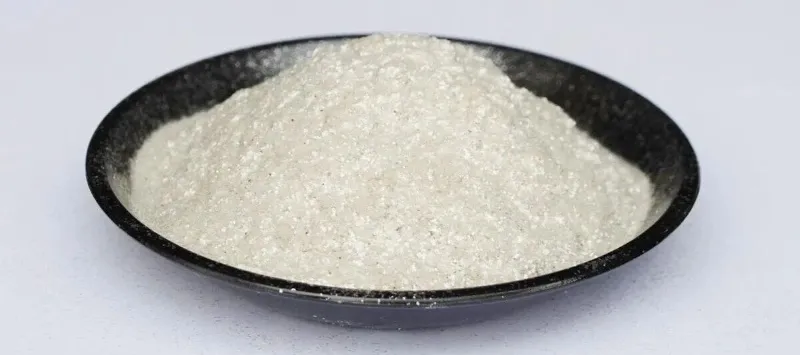
Mica is a group of hydrous aluminum silicate minerals with a continuous layered silicate structure. It appears as a light gray flaky crystalline powder with strong chemical stability and excellent adhesion. Mica provides moderate luster, smoothness, good coverage, and dispersibility, improving both the texture and appearance of cosmetics. Synthetic mica, produced through special processing, enhances brightness, whiteness, and durability — widely used in face powder, pressed powder, blush, and foundations.
Silica
Silica used in cosmetics includes microcrystalline silica, precipitated silica, fumed silica, and silica gel powder. Precipitated silica is a white powder with excellent lubricity, oil absorption, and adsorption properties, and is chemically stable. It is often used in eyeshadows, toothpaste, and cosmetic raw material modification.
Spherical silica micropowder has good flowability and large surface area, making it suitable for lipsticks, pressed powders, and foundation creams.
Montmorillonite
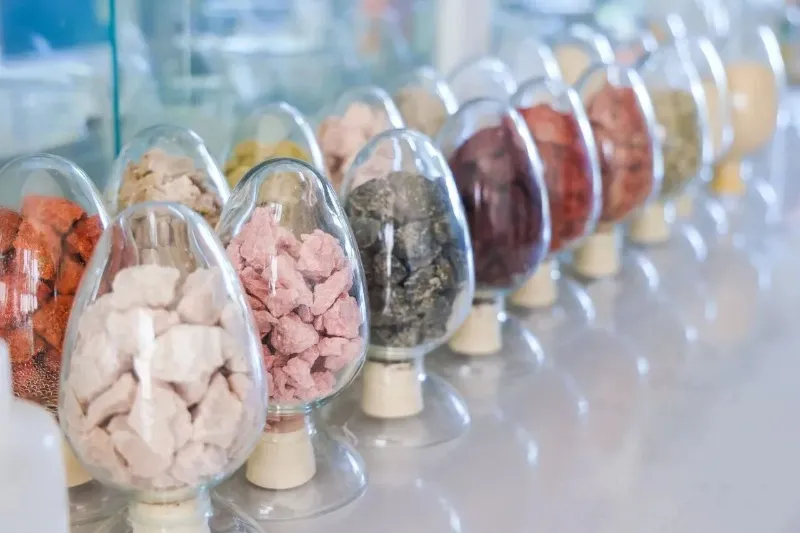
Montmorillonite effectively removes and absorbs residual makeup, impurities, and excess oils from the skin, tightens enlarged pores, accelerates exfoliation of aged cells, lightens pigmentation, and improves skin tone. Cosmetic-grade montmorillonite must meet strict standards in whiteness, heavy metal content, and fineness. It is commonly used in creams (as thickener, suspending agent, or emulsifier), face masks, and moisturizers for cleansing, detoxifying, soothing, beautifying, and hydrating functions.
Calcium Carbonate
Calcium carbonate is mainly used in face powders, pressed powders, blush, and body powders. It eliminates the glittering effect of talc, provides excellent absorbency, and can also act as a fragrance carrier. It enhances the flowability and adhesion of products, helps adjust pH values, and serves as a viscosity regulator to maintain product texture and stability.
Magnesium Carbonate
Magnesium carbonate is used in face powders and liquid powders as an absorbent due to its strong oil absorption ability. It is considered safe (risk factor 1) and generally poses no concern for pregnant women.
However, excessive use may over-absorb sebum, leading to skin dryness, so its usage should not exceed 15%. In powder cosmetics production, magnesium carbonate is often pre-mixed with fragrance before blending with other materials.
Diatomite
Diatomite has a porous structure and a high oil absorption rate, making it an affordable filler powder. It is mainly used in various powder and pressed powder products, and can also be added to facial masks.
Tourmaline
Tourmaline comes in a variety of colors and possesses pyroelectric and piezoelectric properties. Research suggests that adding tourmaline to cosmetics may enhance the skin’s absorption of active ingredients.
Boron Nitride
Boron nitride (BN) is an inorganic compound, pure white in color, with a layered structure similar to graphite, but with boron and nitrogen atoms replacing carbon. The particle size of cosmetic-grade hexagonal boron nitride ranges from 1 to 47 μm, depending on product grade. In cosmetics, BN acts as a slip modifier, brightener, and optical enhancer, improving smoothness, skin feel, and brightness. It is widely used in foundations, loose powders, eyeliners, eyeshadows, blushes, lipsticks, and skincare products.
Alumina
Alumina (Al₂O₃) is used in cosmetics as an exfoliating agent and thickener, and also functions as an anti-caking and adsorbing agent. It is commonly found in blushes, foundations, lipsticks, and facial cleansers. It also serves as an insoluble carrier for mineral pigments, often blended with mineral makeup powders.
Due to its abrasive nature, alumina is frequently used in exfoliating products and microdermabrasion treatments.
Hydroxyapatite
Ultrafine hydroxyapatite powder is used as a mild abrasive in facial scrubs, helping remove dead skin cells without causing irritation.
In color cosmetics such as foundations and loose powders, hydroxyapatite acts as a filler and texture modifier, improving smoothness and adherence.
Its optical properties can scatter light, creating a “soft-focus” effect that visually blurs fine lines and imperfections.
Zinc Oxide
Zinc oxide is a white, odorless powder with uniform particle size and stable chemical properties. It disperses easily, producing delicate and smooth textures with strong adhesion. It has excellent UV protection, capable of absorbing and reflecting ultraviolet rays, and is commonly used in sunscreens, foundations, and BB creams.
Titanium Dioxide
Titanium dioxide (TiO₂), like zinc oxide, is a white, odorless powder. Adding a small amount of TiO₂ to makeup enhances whitening, skin tone uniformity, and blemish coverage. It is widely used in sunscreens, foundations, and pressed powders.
Iron Oxides
Iron oxides are a key group of cosmetic pigments, including red (CI77491), yellow (CI77492), black (CI77499), and brown (CI77491/77492/77499).
They differ in composition, structure, and preparation method. These inorganic pigments have excellent coloring strength, opacity, durability, and light stability, and are extensively used in blushes, lipsticks, and other color cosmetics.
Ultramarine
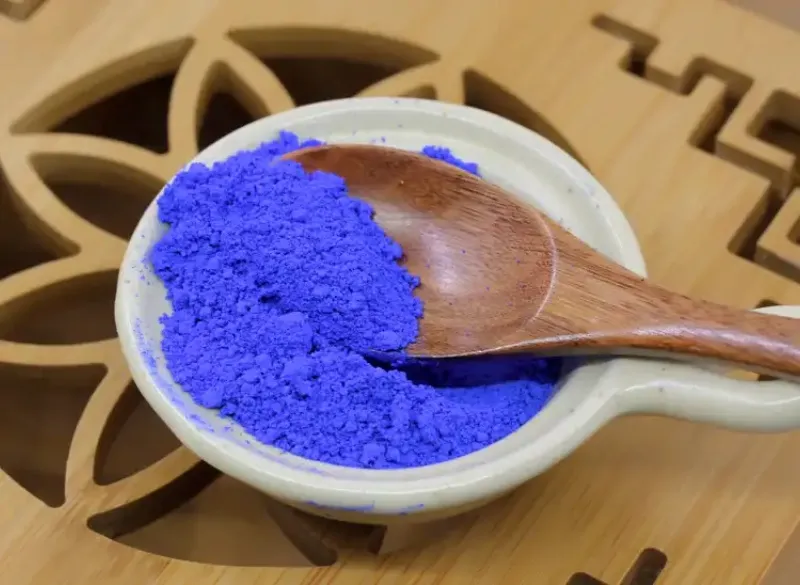
Ultramarine (CI77007), also known as “Lapis Blue” or “Ocean Blue,” is a framework-structured silicate and a non-toxic, harmless red-blue inorganic pigment.
Its unique red-toned blue cannot be mixed using other pigments. Originally made from sulfur, clay, quartz, and carbon, it is now mainly synthetic, offering higher purity, stronger color intensity, and longer-lasting tone. It is widely used in eyeshadows, lipsticks, and blushes.
Manganese Violet
Manganese violet (CI77742) is a bright purple powder colored by trivalent manganese ions. It is typically made using potassium permanganate, manganese oxide, or manganese carbonate. This red-toned purple pigment has excellent light and heat stability, producing vivid, rich colors. It is mainly used in eyeliners, eyeshadows, and other cosmetics requiring a red-violet shade, as well as in other color applications.
Carbon Black
Carbon black provides strong coloring and covering power and is widely used in black cosmetics such as eyeliners, eyebrow pencils, and theatrical makeup.
It can also contribute whitening and sun-blocking effects, adding more versatility to cosmetic formulations.
Epic Powder
Epic Powder specializes in the research and development of inorganic powders processing solutions, offering advanced grinding, classification, and modification technologies. With over 20 years of experience, our team provides customized systems that ensure stable quality, optimized particle size, and enhanced performance for diverse industrial applications. Partner with Epic Powder to unlock the full potential of your materials.
